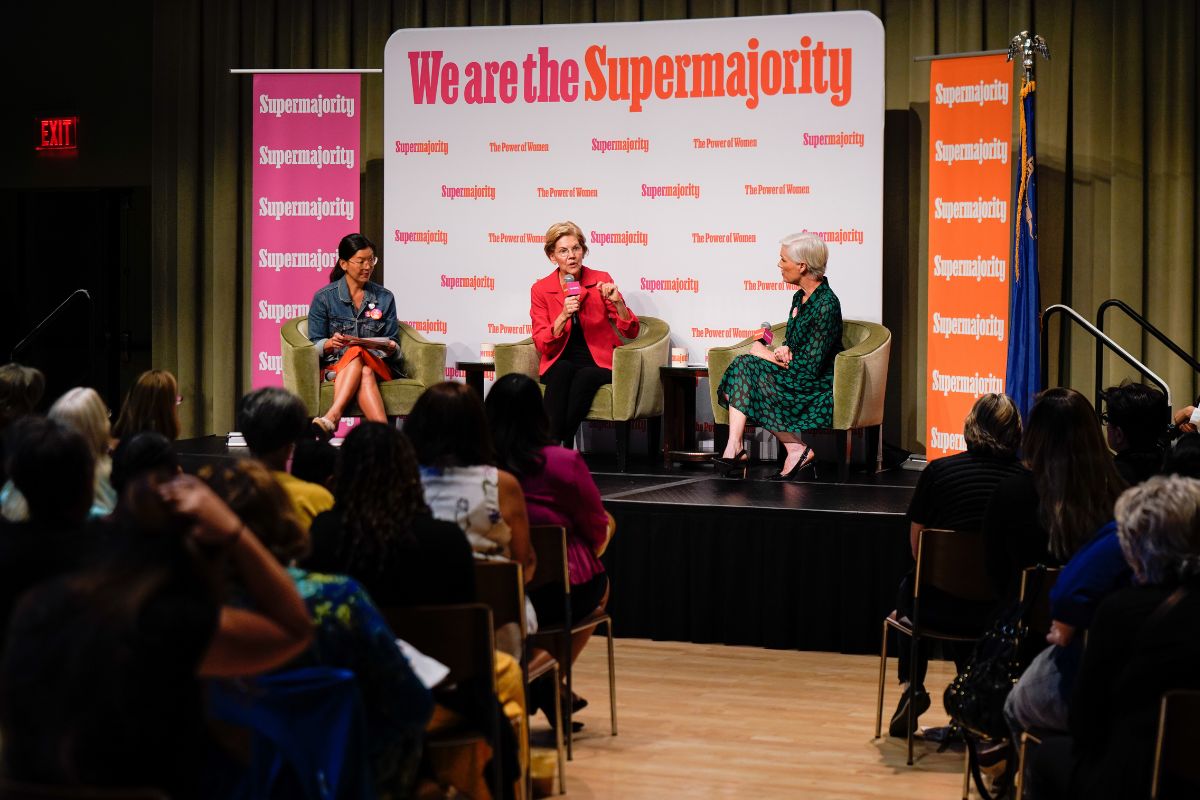 Colleen E. Scott / Scott Designs / Shutterstock.com
Colleen E. Scott / Scott Designs / Shutterstock.com
I remember facilitating a retreat by a public policy watchdog organization some years ago during the primary battles between Hillary Clinton and Barack Obama. Without significant policy differences between the two Democratic candidates, the watchdoggers seemed to lean heavily to Obama for one distinctly unusual reason: transparency. They referenced the secrecy surrounding Hillary Clinton’s efforts around national health reform when she was First Lady and concluded that Obama was making all the right noises about a commitment to transparency. How the wheel turns!
Somehow, the Obama Administration has taken some odd turns on the road to greater transparency. There was no reason for last week’s White House Conference on innovation to be closed to the press, especially with the invitation-only participants tweeting their hearts out about how wonderful the discussion was, and there was no reason for philanthropy to be so willingly complicit in protecting the session from the transparency it deserved.
On September 20th, the White House Office of Social Innovation and Civic Participation held a program for 150 or so “leaders in philanthropy and finance” for a “private meeting on ‘innovation in philanthropy.’” “Private” meant no outside press, even though participants included a number of major foundations and public officials. Yet, with the hashtag #WHinnovation, participants tweeted to each other and to the world their impressions of what was happening in the session. Hundreds of tweets were flying, not one voicing a note of dissonance, all finding great wisdom in the wonderful ideas heard and shared. The Nonprofit Quarterly contacted the White House, asking why the session was closed to the press, and was given a pro forma statement affirming that the session was closed, but no explanation. We twice contacted the press officer at the Office of Social Innovation and Civic Participation as well, but we never received a response about the no-press rule or who would be in attendance.
The official statement we were given by the White House “on background” was also given to the Chronicle of Philanthropy, which raised the same question. The statement read, “Today, the Office of Social Innovation and Civic Participation hosted leaders from across the field of philanthropy, including executives from private, corporate, family, and community foundations along with select academics, analysts, and thought leaders to share best practices and discuss how leaders can work together to strengthen local communities. This meeting was closed [to] press.”
One might write the session off as inconsequential, not worth attention or concern since it was largely a lovefest of self-styled social entrepreneurs and the foundations (and foundation sector leaders) that support them sharing models of their work for a few hours at the Executive Office Building. One might write it off, except that transparency in our society and in the nonprofit sector is under attack.
501(c)(3) public charities and 501(c)(4) social welfare organizations guard the confidentiality of their donors even when it appears that the public interest would be much better served by disclosure. Legislative efforts to secure increased disclosure of donations to (c)(4)s through the DISCLOSE Act have been unsuccessful, even those DISCLOSE was weakened with enough loopholes and exceptions to allow the likes of the National Rifle Association to escape elements of needed transparency.
If foundations and nonprofits—and social entrepreneurs—buy into making the White House innovation session a secret, no-press event, what is the message that they are sending?
What’s the Big Secret?
What’s so secret about philanthropy and innovation at the White House conference? As hard as we might imagine that the content of the speakers was top-secret and important to keep away from the mainstream or nonprofit press, we simply can’t find the justification, at least by any perusal of the tweets from participants.
For example, Jacqueline Smith of Arizona State University tweeted her interest in the agenda topic of “scaling pay for success,” a hot issue in philanthropic circles dominated by the likes of author Dan Pallotta. A financial “coach” named Saundra Davis, tweeting as “Sage Money,” reported that entrepreneurs were told they are a reflection of all the things that can go right in Washington. Jessica David from the Rhode Island Foundation and others noted Mario Morino’s (Venture Philanthropy Partners) announcement of plans for a John Gardner Academy and said Morino wants to apply the Khan Academy model for supporting social sector leaders. Eric Kessler of Arabella Advisors, social entrepreneur Annemarie Harris, Kippy Joseph of the Rockefeller Foundation, and others tweeted about the discussions on social impact bonds, noting New York City’s first social impact bonds with Goldman Sachs as the first investor. Nary a critical word about social impact bonds was evident in any of the tweets. Rockefeller’s Judith Rodin was cited for her call of linking private and government capital to solve social problems. Megan Kashner of Benevolentnet talked about bringing crowdfunding to scale. The new leader of Guidestar, Jacob Harold, talked about the importance of “information scaffolding for financial innovation.”
And so it went. What was so secret about these conversations? Why couldn’t the mainstream press have been invited to report on philanthropy’s frontline role in this nation’s economic progress? Damned if we can figure it out. But a good time was had by all, as they all noted in their tweets reporting on “news” from the event. The only mildly discordant note was a comment from one Gordon Jay Frost, who wrote, “Where is the Social coverage? Can’t find a video feed or anything on the WH site & the hashtag has almost nothing” and then added, “Never has a twitter hashtag had such promise unfulfilled! Please, #WHinnovation attendees: share with your colleagues outside the room!” In a separate Twitter exchange, Anthony Bugg-Levine of the Nonprofit Finance Fund noted that there was nothing “conspiratorial” in the closed-door program because the White House encouraged participants to tweet. Frost added, “Tweets made #WHInnovation sound innocuous not conspiratorial. All just ‘take risks’, ‘look who we hired’ & ‘honored to be here.’” Frost’s summation is disappointingly spot on.
The Chronicle of Philanthropy’s Suzanne Perry’s comment about the event underscored the all but obvious problem of a program on innovation conducted in a manner that limits the dialogue. Perry wrote, “People who promote innovative approaches to social problems usually stress the importance of sharing knowledge so that everyone can learn about the most effective strategies. But organizers of Thursday’s closed-door White House Forum on Philanthropy Innovation must not have gotten the memo.”
If such a memo was ever issued, it might have included Mark Birbeck’s conclusion that “openness leads to innovation” and “innovation leads to openness.” Or Jim Clemmer’s observation that “innovation requires (a) culture of trust and openness.” We needn’t go on. The point is all too obvious—except, it seems, to the people who decided to hold a session on philanthropy and innovation to be discussed only by tweeters engaged in serial superlatives about their excitement of being at the White House.
Did the White House make a distinction between social media (in this case a roomful of people adoring commentary) and other media that might say something not quite so worshipful? Meanwhile, bloggers such as Cheryl Dorsey at Echoing Green and Katherina Rosqueta of the Center for High Impact Philanthropy commented on this conference and were clearly not prohibited by the White House from doing so, further adding to the mystery.
It is less than two months before the elections. Perhaps there is some paranoia in the White House about message control, but concern about foundations and social entrepreneurs talking about innovation? Just how much danger could there have been if a reporter had actually been there to dig deeper into Jean Case’s comment that there has never been a better time to try new things and take risk? Or what it means to have Goldman Sachs be the first social impact bond investor given Goldman’s behavior during the nation’s financial crisis? Or what makes human and social capital more than “yada yada” issues to Paul Shoemaker of Social Venture Partners, given that they have always been crucial to the identity and success of the nonprofit sector? What could they have said that would have caused the administration agita? Even with Obama administration staff, such as President Obama’s chief advisor, Valerie Jarrett, U.S. Treasurer Rosie Rios, and Jonathan Greenblatt, director of the White House Office of Social Innovation and Civic Participation, on the agenda, how much could they say in this kind of program that would warrant holding the session in a press-free cone of silence but for favored tweeters and bloggers?
Sign up for our free newsletters
Subscribe to NPQ's newsletters to have our top stories delivered directly to your inbox.
By signing up, you agree to our privacy policy and terms of use, and to receive messages from NPQ and our partners.
The White House’s Fading Dedication to Transparency
More troubling is that the culture of a lack of openness has been a problem for the White House’s social innovation efforts throughout the past four years. The flagship administration program on social innovation—the Social Innovation Fund—has been plagued with problems of insufficient transparency almost as a default framework. The Nonprofit Quarterly was the first publication to call out SIF’s less than open approach to social innovation in August 2010, which generated a variety of confusingly defensive explanations from SIF staff until the program begrudgingly made some minor steps toward increased transparency (see here and here). Nonetheless, at least under its previous directors, the Corporation for National and Community Service was falling well short of the administration’s pledges for a regime of increased governmental transparency. Because the Corporation is the locus in this administration for attention to the nonprofit sector and the home for much social innovation programming, its tendencies to restrict the flow of information—except as it flows to the foundations that are the mainstay partners of the Social Innovation Fund and other programs—is a disturbing commentary on American innovation and the commitment to public transparency.
Candidates for president usually find much to decry as hidden in a previous administration’s policies, but when a candidate becomes president, the desire to share information freely starts to wane. The Obama administration has had some relatively widely appreciated accomplishments when it comes to transparency and disclosure, notably the database that it developed for tracking and reporting on expenditures and accomplishments with the American Recovery and Reinvestment Act of 2009. Defending the president’s use of executive privilege on some of Attorney General Eric Holder’s documents in the “Fast and Furious” brouhaha, White House chief of staff Jack Lew defended the administration as “the most transparent ever.” But in other arenas, the Obama administration has not scored high marks for its openness.
According to the Washington Post, “Some of…[the Obama administration’s] high-profile transparency measures have stalled, and by some measures the government is keeping more secrets than before.” The Post reported that federal agencies typically provide less information now than they did in 2010 in response to Freedom of Information Act (FOIA) requests and are more prone than they were in 2010 to use FOIA exemptions as a reason to refuse to supply information. Politico described the Obama Administration’s track record on open government as “muddy” and quoted a Washington-based lawyer named Katherine Meyer with more than three decades of experience in filing FOIAs to say, “Obama is the sixth administration that’s been in office since I’ve been doing Freedom of Information Act work. … It’s kind of shocking to me to say this, but of the six, this administration is the worst on FOIA issues. The worst. There’s just no question about it…This administration is raising one barrier after another… It’s gotten to the point where I’m stunned — I’m really stunned.”
Are Foundations Complicit in Helping Government Limit Transparency?
In the early days of the administration, a Council on Foundations program on how philanthropy and the Obama administration could work together on revitalizing cities featured presentations of great interest. Bruce Katz of the Brookings Institution presented his “metronation” concept, and then Valerie Jarrett was invited to the stage to talk to the assembled foundation staff—at which point the press, including this author, was invited to leave. That was despite the fact that among the foundation people who stayed were several who penned regular blogs under their own name or for their institutions—and they did so.
Those were the heady days when foundations viewed the incoming administration as a close partner with philanthropy, before philanthropy began keeping more of a critical distance from the policies of the federal government. After the White House finally relented and made the lists of visitors to the Executive Office Building searchable, it was clear that some foundation leaders were more than frequent visitors. Partnership, rather than a watchdog role, was on the table.
At the more recent innovation conference, the problem with the foundations in the room wasn’t that they were largely cheerleaders for the content of the program. There is nothing wrong with marching into the White House to see nothing amiss with the program, as thin as the substance might have been. But to participate in a session in which the press was booted out? That is a problem for philanthropy.
The program’s listed speakers included Jean Case of the Case Foundation, Ellen Alberding (the Joyce Foundation), Jim Anderson (Bloomberg Philanthropies), Jim Bildner (the Kresge Foundation), Emmett Carson (Silicon Valley Community Foundation), Tessie Guillermo (the California Endowment), Clara Miller (F.B. Heron Foundation), Ronn Richard (the Cleveland Foundation), Judith Rodin (the Rockefeller Foundation), and Julie Sunderland (the Bill & Melinda Gates Foundation). These are some of the sector’s most respected leaders who help set the tone and content of American philanthropy. Some of them, in fact, are the products of a free press (Bloomberg) or funders of various news outlets (Gates helps fund Education Week, Rockefeller supports the PBS NEWSHOUR, and the California Endowment has supported New America Media to fund youth-led news outlets, just to name a few). And, finally, in disclosure, the Gates Foundation is a past funder of NPQ and Kresge, Heron, and Silicon Valley are current funders.
It is not clear whether the presenters knew that press was to be excluded before the event, though it was heralded as a closed-door session. But where there is no compelling rationale for a press blackout, the foundations have either knowingly or unwittingly legitimized and providedallowed themselves to be placed in a position of tacitly legitimizing and providing cover for the White House strategy of absolutely in its habits of inadequate transparency.
Foundations have to be careful that their desire for partnership with the occupants of the White House doesn’t make them forget about some core values of American democracy. This is a serious issue for foundations, as institutional philanthropy overall hasn’t exactly been on the vanguard in terms of practicing openness and transparency. Nonprofits of every stripe are aware that foundations often gather in closed venues, inviting nonprofit participants only for specific functions or presentations, but otherwise preferring to meet in what they call “safe spaces” for discussion. It has always been difficult to imagine what might be an unsafe space for foundation leaders unless they were revealing misappropriations of funds or significant self-dealing. Did they need a safe space to discuss philanthropy and innovation on September 20th? If the topic was the exchange of innovative ideas with the White House, a safe space for conversation limited to friendly faces and reverent tweets was actually counterproductive.
Transparency should be a fundamental concern of 501(c)(3) foundations. As part of the nonprofit sector, foundations have a stake in the core mission of nonprofits, which is, fundamentally, small “d” democracy. What unites nonprofits from the Gates Foundation to a local food pantry isn’t just their IRS tax status. It is what they represent as a collection of one million organizations, standing outside of government and outside, in theory, of the corporate sector, as instruments of democracy for the American public. The closed structure of the White House meeting works against the best interests of the democratic process. For some foundations that make a big point in their missions of promoting the functions of democratic processes, the failure to challenge that closed structure is not good.
No, We’re Not Jealous. Yes, We Are Concerned.
We anticipate that this commentary will move some readers straight into high dudgeon, as though we and other press outlets are somehow jealous that we didn’t get to hobnob at the Executive Office Building (we’ve been there before), cozy up to funders, or signal our excitement about being invited. Others will declare that this is simply the “tall poppies” syndrome, that we and others in the nonprofit press resent and criticize the participants because of their merit that elevates them above the rest of us in the nonprofit sector. Hardly.
No, this is an issue of transparency in government and transparency in the foundation sector. Regardless of the rhetoric, many elements of our society are less transparent than they have been in decades and less open to scrutiny by the press. When political leaders routinely shun the give-and-take of press conferences in favor of carefully cultivated interviews with friendly television personalities, when institutions work on controlling and crafting their messages to the point where only the barest bits of honest news seep through, we are seeing a diminution of democracy. This commentary doesn’t address or take a position on the pros and cons of crowdsourcing fundraising, social impact bond investment strategies, or other initiatives that were touted at the White House conference. It does suggest that philanthropic and government innovation without the real-time scrutiny of the press constitutes a weakening of democracy.











